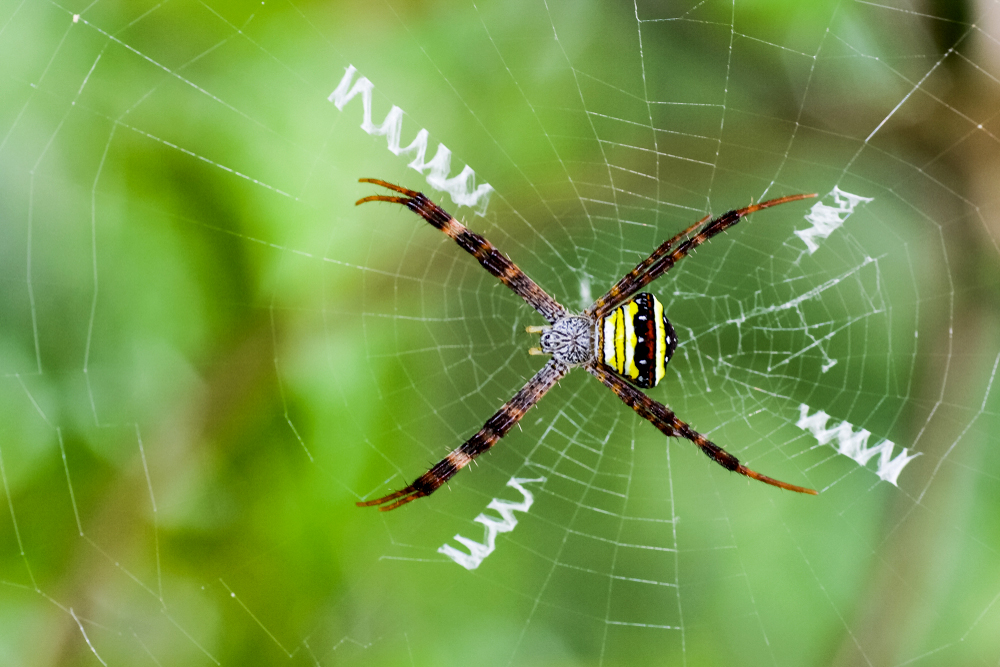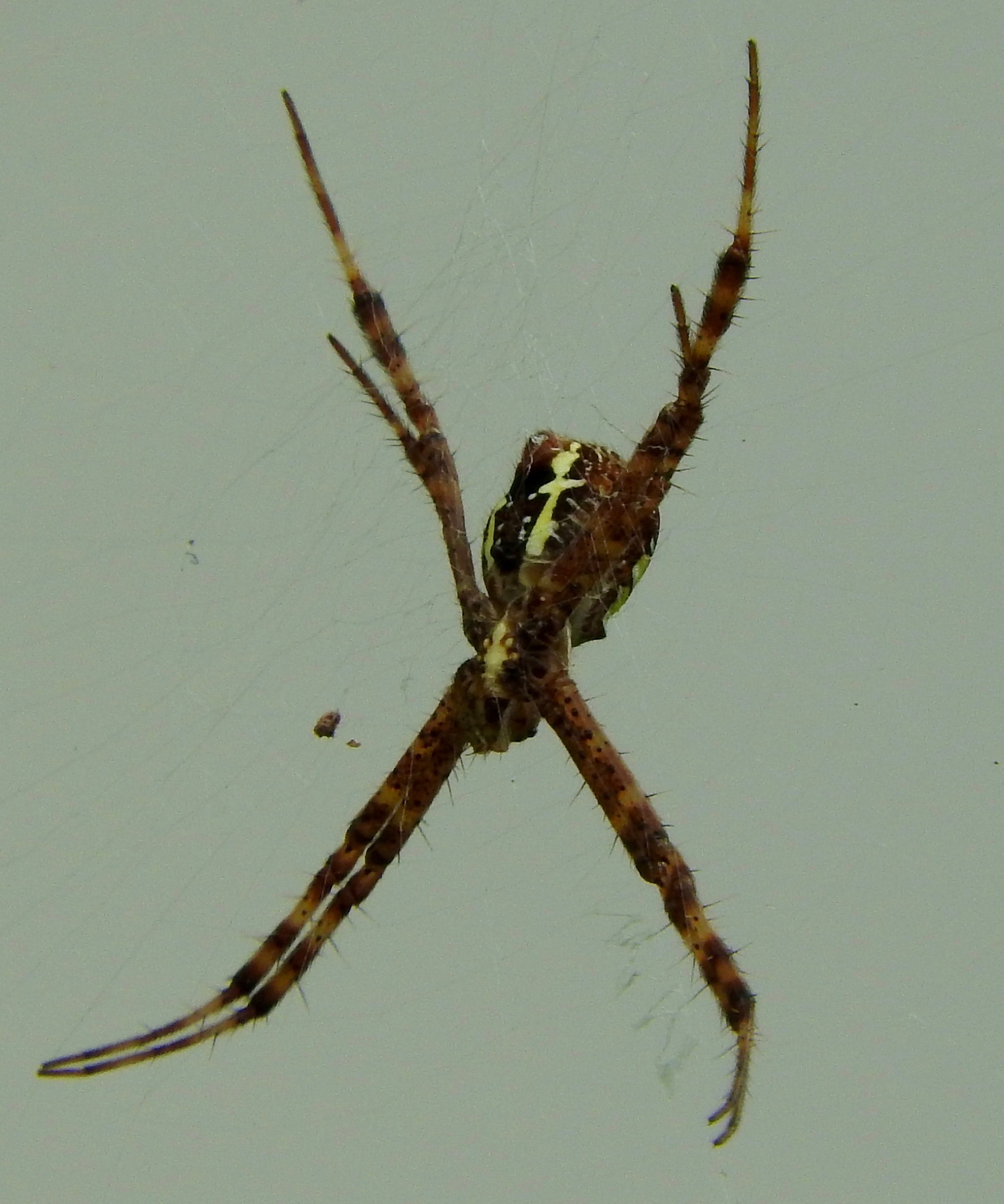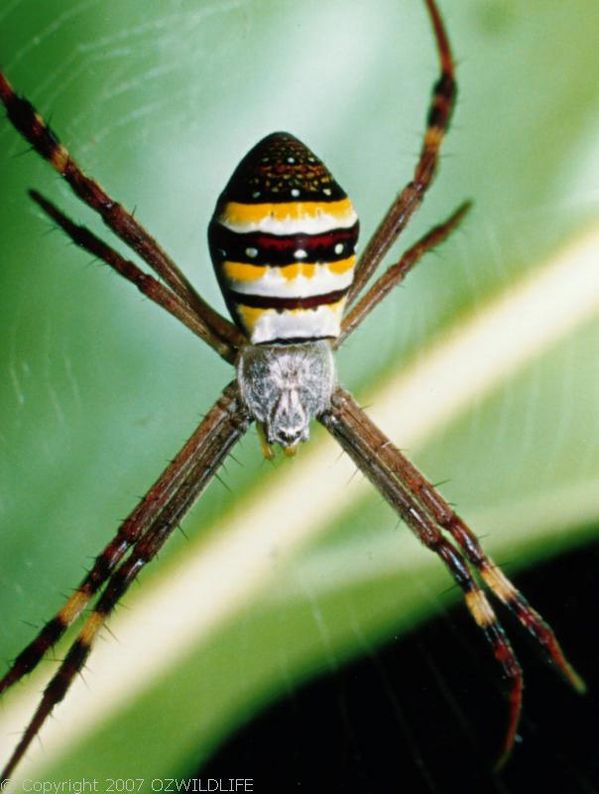FileFemale St Andrew's Cross Spider Argiope keyserlingi.jpg Wikimedia Commons

FileSt. Andrew's Cross Spider.jpg Wikipedia, the free encyclopedia
The St Andrew's Cross Spider's Latin name is Argiope kiyserlingi. The female's size is about 20mm long and its cephalothorax is flattened and covered in white or silver hairs. It also has a banded and spotted abdomen in a white, yellow, red and black pattern The male is about 4 mm long and has a brown body (pic below). In Australia, the St.

Fact File St Andrew’s cross spider (Argiope keyserlingi) Australian Geographic
The St Andrew's Cross Spider's Latin name is Argiope kiyserlingi. The female's size is about 20mm long and its cephalothorax is flattened and covered in white or silver hairs. It also has a banded and spotted abdomen in a white, yellow, red and black pattern The male is about 4 mm long and has a brown body (pic below). Habitat:

FileFemale St Andrew's Cross Spider Argiope keyserlingi.jpg Wikimedia Commons
St Andrew's School. Private. Save. St Andrew's School is a private school located in Middletown, DE. The student population of St Andrew's School is 309. The school's minority student enrollment.
/st-andrews-cross-spider-01-3befc16bcc1c43cd99c4496352c52e75.jpg)
8 Interesting Facts About the St. Andrew's Cross Spider
Introduction. St Andrew's Cross Spiders are named for their bright, cross-shaped web decorations. Identification. St Andrew's Cross Spiders are named for their bright web decorations - zig-zag ribbons of bluish-white silk that form a full or partial cross through the centre of the orb web.

Oval St Andrew's Cross Spider Encyclopedia of Life
Females have a silvery carapace and a silver, yellow, red and black banded upper abdomen with two longitudinal yellow stripes below. The St. Andrew's Cross Spider sits with the legs in pairs. The brown and cream colored males are smaller than females. The body length of the male measures around 3 - 4 millimetres while the females are larger.

"St Andrew's Cross Spider Argiope Keyserlingi (female)." by Normf Redbubble
There is a high degree of variability in the stabilimenta of St. Andrew's cross spiders. Although some weave big, thick X shapes with all four arms, they are also known to weave an X with anywhere.
St. Andrew’s Cross Spider (female) Project Noah
Argiope keyserlingi is a species of orb-web spider found on the east coast of Australia, from Victoria to northern Queensland. [1] It is very similar in appearance to a closely related north Queensland species, Argiope aetherea. A. keyserlingi is commonly found in large populations in suburban parks and gardens, particularly among the leaves of.

St. Andrews Cross Spider (Argiope keyserlingi)
The zig-zags in the web of a St. Andrew's cross spider form a large X shape, similar to the heraldic symbol known as a saltire. It's also known as Saint Andrew's cross, since Andrew the Apostle is traditionally said to have been crucified on a diagonal cross in the shape of the letter X. When the spider sits in the middle of the cross, it.

St Andrew's Cross Spider, (Argiope sp.) Photo by Ecuador Megadiverso on Flickr (cc) Ecuador, St
Adults. Size: Females are 0.39-0.62 in (1-1.6 cm) and males are 0.11-0.15 in (0.3-0.4 cm). Color: Females' carapaces are yellow and gray with black and red bands, while the upper part of the having two yellow horizontal stripes. Males differ in coloration of the body as they are a combination of cream and brown with the same longitudinal stripes.

St Andrews Cross Spider
Size - the size of an adult is about 15 mm in body length. Habitat - this spider is a web-weaver usually found in summer in garden areas around the home. This spider is considered beneficial as it spins a large web to snare flying insects, such as flies and mosquitoes. The St Andrews Cross Spider usually sits in the middle of it's web forming a.

St. Andrew's Cross Spider from Australia What's That Bug?
Average lifespan. One year. Size. Males 3mm- 4mm, females 10mm- 16mm. Not one to blend into the background of its creations, the St Andrew's cross spider is also striking in its own appearance, with bright yellow stripes across its abdomen, making it hard to miss amongst the garden foliage. A male (left) and female (right) St Andrew's cross.

St Andrew's Cross spider St andrews cross, Spider, Saints
Where do St Andrew's Cross spiders live? St Andrew's Cross spiders can be found on the east coast of Queensland, New South Wales and Victoria. Habitats include backyards, open forests, shrubby bush and the edges of rainforests. Medium-sized webs are built about one to two metres above the ground and can usually be found between shrubs and bushes.
St. Andrew's Cross Spider Nature, Cultural, and Travel Photography Blog
St Andrew's Cross Spiders - the full story. St Andrew's Cross Spiders are fantastic backyard buddies as they spin big webs that easily snare insects such as flies, mosquitoes, moths, bees and bugs. They are not aggressive towards people and their bite is not toxic. The webs of St Andrew's Cross Spiders are also fascinating to look at.
FileSt Andrews Cross spider.JPG Wikipedia
Argiope aetherea is a common, large orb-web spider (family Araneidae). Like other species of Argiope, it is commonly known as the St Andrew's Cross spider, due to the characteristic cross-shaped web decorations female spiders often include in their webs. A. aetherea is similar in appearance to A. keyserlingi, however female A. aetherea are generally larger than A. keyserlingi.

St Andrew's cross spider (Agriope keyserlingi) Professional Pest Manager
St. Andrews Cross Spider ( Argiope keyserlingi ) St. Andrews Cross Spider - showing the white cross pattern in the web. This spider appears to have lost two of its back legs and is growing new legs - see how the two back legs on the right of the photo do not match the others.
:max_bytes(150000):strip_icc()/st-andrews-cross-spider-male-female-318ed0fec14f493696008e5fb7114ecc.jpg)
8 Interesting Facts About the St. Andrew's Cross Spider
St Andrew's Cross Spider - Argiope keyserlingi. Family - Araneidae (Araneomorphae) ~ These spiders get their name from the shape of their web decorations, the white silk that they spin through the centre of the orb web in the shape of a cross. The spider also sits in the web with its legs in pairs forming the shape of a cross.